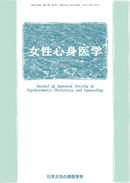Volume 28, Issue 2
Displaying 1-11 of 11 articles from this issue
- |<
- <
- 1
- >
- >|
-
2023Volume 28Issue 2 Pages 141
Published: 2023
Released on J-STAGE: December 04, 2023
Download PDF (91K)
-
2023Volume 28Issue 2 Pages 165
Published: 2023
Released on J-STAGE: December 04, 2023
Download PDF (131K) -
2023Volume 28Issue 2 Pages 167-175
Published: 2023
Released on J-STAGE: December 04, 2023
Download PDF (856K) -
2023Volume 28Issue 2 Pages 176-182
Published: 2023
Released on J-STAGE: December 04, 2023
Download PDF (993K) -
2023Volume 28Issue 2 Pages 183-188
Published: 2023
Released on J-STAGE: December 04, 2023
Download PDF (324K) -
2023Volume 28Issue 2 Pages 189-191
Published: 2023
Released on J-STAGE: December 04, 2023
Download PDF (465K) -
2023Volume 28Issue 2 Pages 192-198
Published: 2023
Released on J-STAGE: December 04, 2023
Download PDF (1289K)
-
2023Volume 28Issue 2 Pages 199-204
Published: 2023
Released on J-STAGE: December 04, 2023
Download PDF (594K) -
2023Volume 28Issue 2 Pages 205-210
Published: 2023
Released on J-STAGE: December 04, 2023
Download PDF (295K) -
2023Volume 28Issue 2 Pages 211-221
Published: 2023
Released on J-STAGE: December 04, 2023
Download PDF (529K)
-
2023Volume 28Issue 2 Pages 222-231
Published: 2023
Released on J-STAGE: December 04, 2023
Download PDF (1049K)
- |<
- <
- 1
- >
- >|
